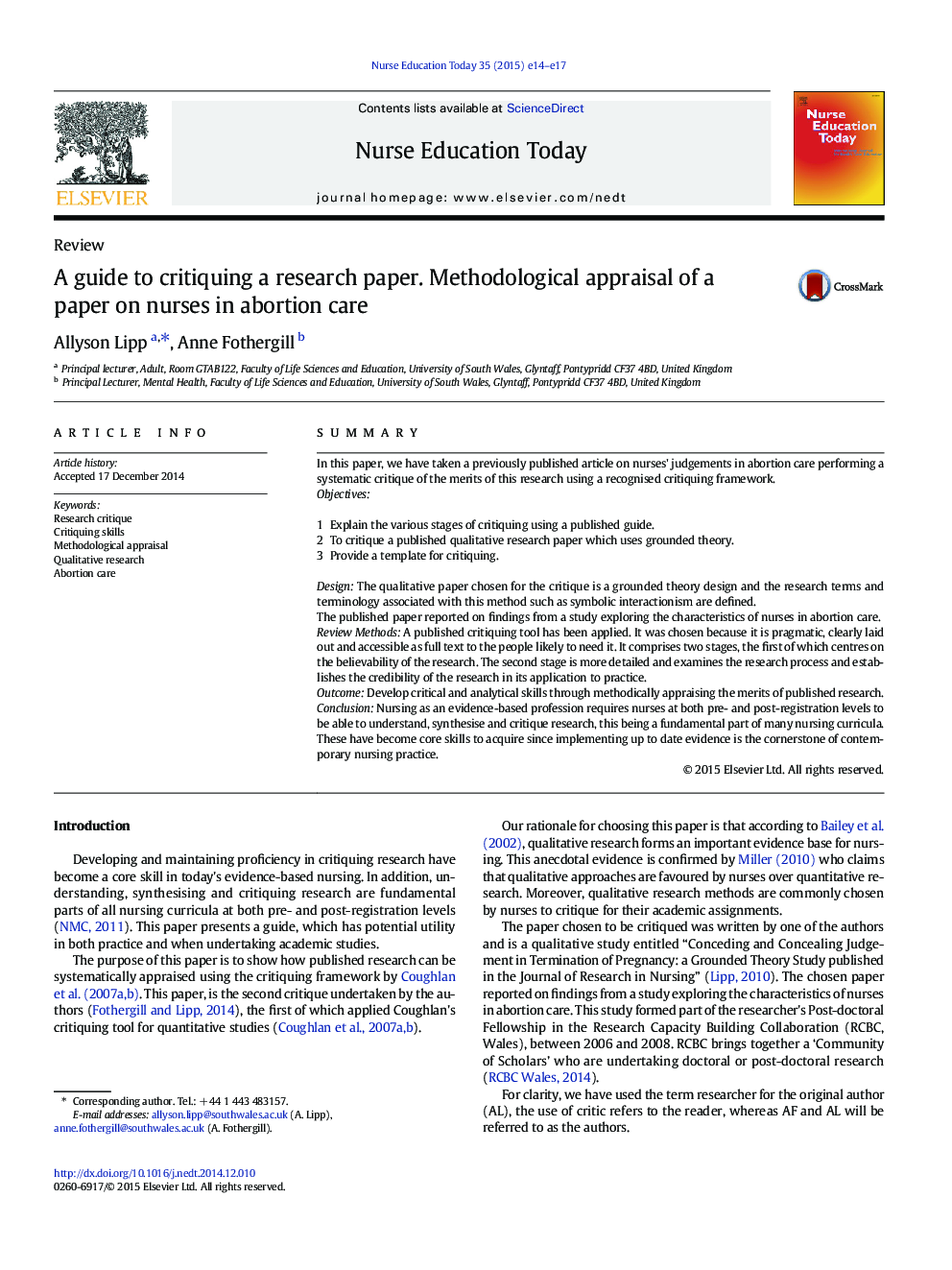| Article ID | Journal | Published Year | Pages | File Type |
|---|---|---|---|---|
| 368077 | Nurse Education Today | 2015 | 4 Pages |
SummaryIn this paper, we have taken a previously published article on nurses' judgements in abortion care performing a systematic critique of the merits of this research using a recognised critiquing framework.Objectives1Explain the various stages of critiquing using a published guide.2To critique a published qualitative research paper which uses grounded theory.3Provide a template for critiquing.DesignThe qualitative paper chosen for the critique is a grounded theory design and the research terms and terminology associated with this method such as symbolic interactionism are defined.The published paper reported on findings from a study exploring the characteristics of nurses in abortion care.Review MethodsA published critiquing tool has been applied. It was chosen because it is pragmatic, clearly laid out and accessible as full text to the people likely to need it. It comprises two stages, the first of which centres on the believability of the research. The second stage is more detailed and examines the research process and establishes the credibility of the research in its application to practice.OutcomeDevelop critical and analytical skills through methodically appraising the merits of published research.ConclusionNursing as an evidence-based profession requires nurses at both pre- and post-registration levels to be able to understand, synthesise and critique research, this being a fundamental part of many nursing curricula. These have become core skills to acquire since implementing up to date evidence is the cornerstone of contemporary nursing practice.
